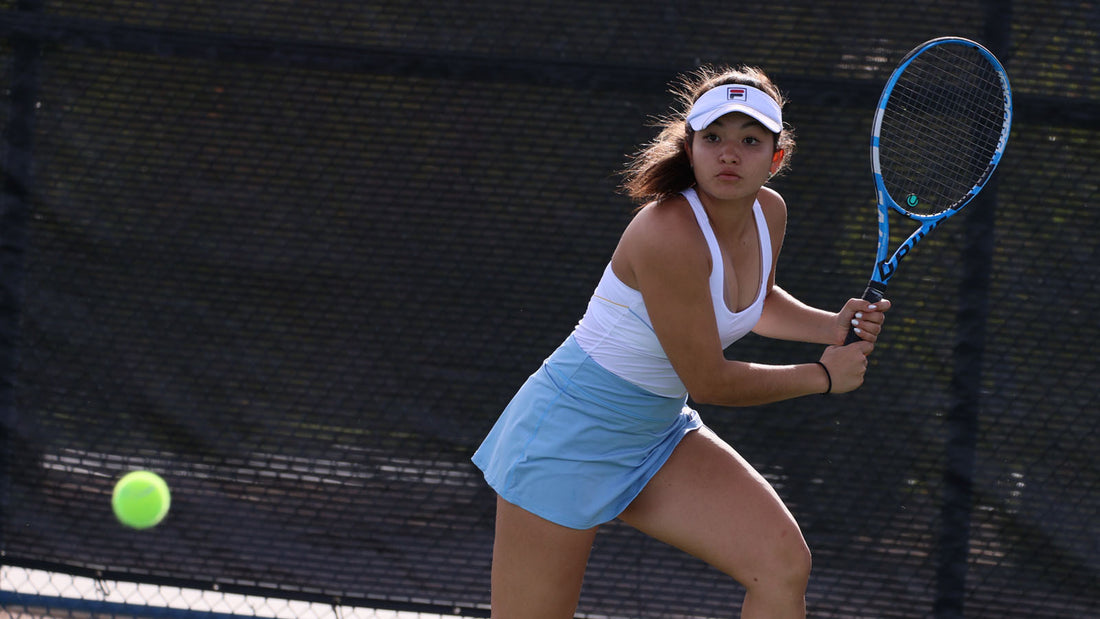The exciting action of high school tennis brims with potential. More players—an estimated 340,000—compete on high school teams than in any other form of organized tennis in America, with the possible exception of USTA adult leagues.
Teenaged players hit the courts at a formative age. Exhilarating play on a high school team can help develop a love of tennis in teens who may enjoy the sport for the rest of their lives. Too often, however, teenagers face unevenly matched play. Better players aren’t sufficiently challenged. Inexperienced players get discouraged enough to leave the game and go elsewhere.
“Historically, high school tennis, even 30 years ago when I played, was not taken very seriously,” says Greg Chambers, director of tennis at Ensworth School, a private K-12 school with 1,100 students in Nashville, Tennessee. “The better teen players traditionally pursue USTA rankings. What matters to them aren’t high school matches, but weekend USTA tournaments, where they can chase ranking points. High school tennis is not perceived as a path to college tennis. You don’t have a lot of serious players in high school tennis because they don’t get ranking points or any credit from a college coach’s view.”

That, however, is about to change. Universal Tennis will soon begin testing its Team Match Reporting (TMR) tool. High school mentors like Chambers will give TMR a trial run this spring. The new, free online platform will let a tennis coach enter a lineup of players from a drop-down menu, identify the starting singles players and doubles teams in order, and record scores after the match, as the opposing coach does the same.
These results will automatically feed into Universal Tennis' algorithm and update the player’s ratings. Coaches could also send their reports to fans, parents, sports information departments, and local newspapers. It’s all done electronically, without paper, reducing cost and improving the quality of data, says Harvard men’s coach Dave Fish. “It’s also totally portable,” he adds. “You can adapt the format, for example, to the way things are done at high school matches in California and prep-school matches in New England.”
That’s important because private and public secondary schools in each of the 50 American states operate independently of each other: nationally, it’s a hodgepodge. Luckily, UTR Rating, which crosses all state and national borders, has become the sport’s “metric system.” It is already the common language of college tennis.
“If UTR Rating were used in the high school setting the way it is in colleges, you’d see a lot more kids participating in high school tennis,” Chambers explains. “Suddenly, those high school matches would mean something, because college tennis coaches pay attention to UTR Rating—it counts! When you talk with college coaches about a recruit, the first question they ask is, ‘What’s their UTR Rating?’"

Since UTR Rating has established itself as a far more accurate measure of tennis skill than USTA or ITF rankings, when UTR Ratings become widely applied among secondary-school players, matches will suddenly be taken very seriously indeed—it will give those 340,000 teen athletes a rating to play for. Fish says, “UTR Ratings will offer these young players full citizenship in U.S. tennis.”
As a powerful tool for generating level-based play, Universal Tennis will go a long way toward producing the kind of even, competitive matches that keep people interested in the game and improve their play. “Say a kid enters his first tournament and gets beaten, 6-0, 6-0,” says Chambers. “They’re headed for the soccer field.” Or as Fish puts it, “They get clobbered by people who play all year round, and say, ‘I’m not going back to that.'”
Indeed, USTA statistics show that 38 percent of those who play an age-based junior tournament never play another one. One big reason for this is that age-based events make little (or no) distinction regarding player skill, so a wide range of abilities shows up in the same event. The result? Too many players losing (or winning) by a lopsided score. Chambers explains, “In UTR Rating terms, a 6.53 player need not be on the court with a 9.53 player. It wastes everybody’s time and is discouraging. Level-based play is the key to fun, competitive matches, thus improving player development.”
The majority of high school contests, too, are rife with mismatches, even famous for them. The data show that only 18-20 percent of high-school matches are competitive by UTR Rating’s definition: an outcome of 6-3, 6-4, or closer. This means that 80 percent or more of the time, teenage athletes slog through routine or decisive contests, frequently ending at 6-1, 6-0, or something similar.
“Too many kids are winning with no challenge, or losing badly, and they are turned off,” says Chambers. “It’s no fun for me to play basketball against a 6’11” guy who stuffs all my shots.”
States separate high schools into divisions, based on school enrollment, and this is the source of many of these blowout matches. For a team sport like football, with large squads that require a wide variety of athletic abilities, this makes some sense. But for tennis, an individual sport with small teams, the size of the school has little or no correlation with the strength of its team.
A far more important factor is “whether your high school is near a tennis club,” Fish explains. Country club and tennis academy players have been developing their games under professional guidance for many years before they matriculate at a high school. Ambitious junior players who haunt the USTA weekend events are also likely to be strong competitors who’ll often steamroll their teenage opponents.
"
is the best thing to happen to tennis since Billie Jean King played Bobby Riggs in the Battle of the Sexes.”
Those opponents can upgrade their games via an abundance of level-based play, which “can bring communities together, including kids who don’t have the means to travel,” says Chambers. “If you live in Nashville, you don’t have to play a tournament in Rome, Georgia, to find good competition. I know I can get a kid at any level a good match in Nashville just by going to my phone and looking up their UTR. I can tell right away who I should call on my team to set up a good match. I won’t know this based on statewide rankings, or USTA rankings, or another coach’s idea of their player’s level. Those are all relative measures. UTR is not relative—they have hit it out of the ballpark on accuracy. In my opinion, it’s the best thing to happen to tennis since Billie Jean King played Bobby Riggs in the Battle of the Sexes.”
One girl in Nashville drove several hours with her parents and stayed overnight to play a tournament, spending $500 to do so. Once there, she lost 6-0, 6-0 and 6-1, 6-2. “They were not competitive matches, and she did not have a good time,” Chambers says. That same weekend, some of her friends in Nashville were playing practice sets with each other, the matchups arranged by UTR Rating and decided by scores like 7-5 and 6-4. “She could have stayed home, saved time and money, and enjoyed the weekend with her friends while playing a much better grade of tennis,” Chambers says.
Another benefit of UTR Rating, Chamberes says, lies in removing the subjectivity from player evaluation. “It’s not based on how I view their technique, or their power, or what might impress a spectator,” he says. “UTR cuts through all the gray areas, and gets to the black-and-white of facts—actual results.”
Taken together, all of these advantages are what will keep high school athletes playing tennis, now and from now on. The future depends on it, because, as Chamber notes, those adolescents “are the biggest fishing pond of clients that tennis has.”
Make your own young players “citizens” of the tennis world by claiming their profiles. Sign up here.


